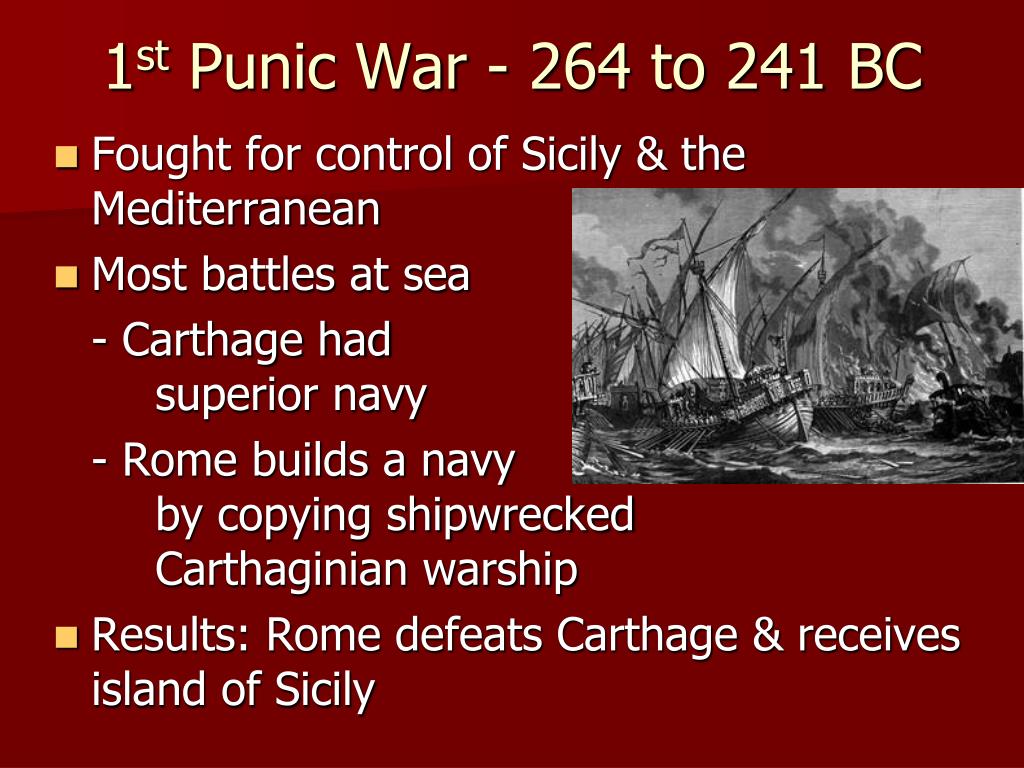The First Punic War, spanning from 264 to 241 BCE, marked a pivotal moment in ancient history, as two burgeoning powers, Rome and Carthage, clashed in a struggle for dominance over the Mediterranean. This article delves into the historical perspectives surrounding the dawn of this conflict, exploring its origins, key events, and the profound impact it had on the course of both civilizations.
Origins of the Conflict
The roots of the First Punic War can be traced back to the strategic interests and expansionist ambitions of both Rome and Carthage. Carthage, a Phoenician city-state with a formidable maritime empire, sought to maintain control over lucrative trade routes and territories in the western Mediterranean. Rome, on the other hand, was expanding its influence across the Italian peninsula and eyed the island of Sicily as a crucial stepping stone for further expansion.
The spark that ignited the conflict was the city-state of Messana (modern-day Messina), situated on the northeastern tip of Sicily. In 264 BCE, internal strife within Messana led to a plea for intervention from both Rome and Carthage. The response from these two powers transformed a local dispute into a full-scale war. The clash of interests, combined with unresolved territorial claims, set the stage for a protracted and bitter struggle.
Naval Supremacy and the Battle for Sicily
The First Punic War unfolded on multiple fronts, but the naval theater emerged as a defining aspect of the conflict. Carthage, with its formidable navy, initially held the upper hand at sea. The Romans, traditionally a land-based power, faced the challenge of adapting to naval warfare. This led to the development of a formidable Roman fleet, showcasing the adaptability and resilience that would become hallmarks of Roman military prowess.
The Battle of Mylae in 260 BCE and the Battle of Ecnomus in 256 BCE were pivotal naval engagements that saw Rome gradually gaining control of the seas. These victories marked a significant turning point, allowing Rome to launch successful land campaigns in Sicily. The struggle for control over the island became emblematic of the broader conflict, with both powers pouring vast resources and manpower into the campaign.
Epic Struggles on Land
While naval battles dominated the early years of the war, the conflict eventually spilled onto the shores of Sicily and other regions. The Siege of Agrigentum, a crucial city in southern Sicily, witnessed fierce battles and showcased the determination of both Roman and Carthaginian forces. The war’s land campaigns were marked by strategic brilliance and tactical innovation, as commanders on both sides adapted to the challenges posed by unfamiliar terrain and formidable adversaries.
Political Intrigues and Diplomatic Maneuvers
The political landscape during the First Punic War was as complex as the military campaigns. Carthage and Rome engaged in diplomatic maneuvering, attempting to secure alliances and undermine each other’s support. The conflict witnessed shifts in alliances and betrayals, with city-states and tribal entities in the region aligning themselves with the power they deemed most advantageous to their interests.
The Roman general Hamilcar Barca and his Carthaginian counterpart, Hanno the Great, played crucial roles in shaping the political and military strategies of their respective nations. Their rivalry and strategic acumen added layers of complexity to an already intricate conflict.
Legacy of the First Punic War
The First Punic War concluded in 241 BCE with the signing of the Treaty of Lutatius, which recognized Rome’s dominance in Sicily. The war’s aftermath left both Rome and Carthage depleted, but it also set the stage for future conflicts between these ancient powers. Carthage’s territorial losses and the indemnity imposed by Rome sowed the seeds for deep-seated resentment, culminating in the outbreak of the Second Punic War.
The First Punic War’s legacy extended beyond territorial disputes; it fundamentally shaped the military and naval capabilities of both Rome and Carthage. Rome’s newfound naval prowess and adaptability laid the foundation for its future expansion and dominance in the Mediterranean.
In conclusion
The First Punic War stands as a watershed moment in ancient history, characterized by epic naval engagements, strategic brilliance on land, and intricate political maneuvering. The conflict not only determined the fate of Sicily but also set in motion a series of events that would shape the destinies of Rome and Carthage for years to come. The dawn of this conflict marked the beginning of a new chapter in the annals of Mediterranean history, where the rivalry between two great powers would continue to unfold with profound consequences.
